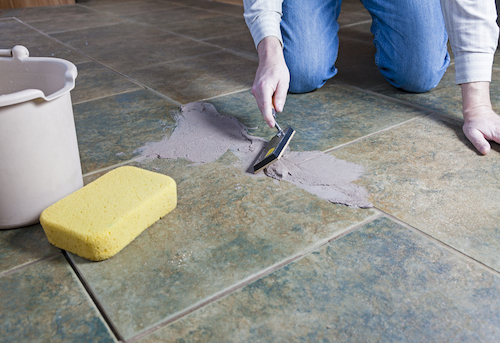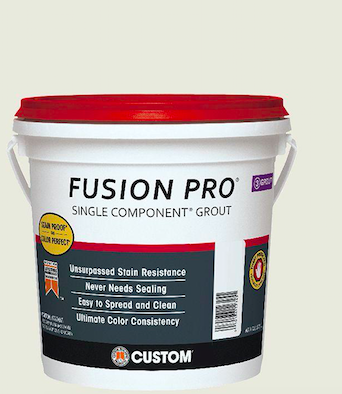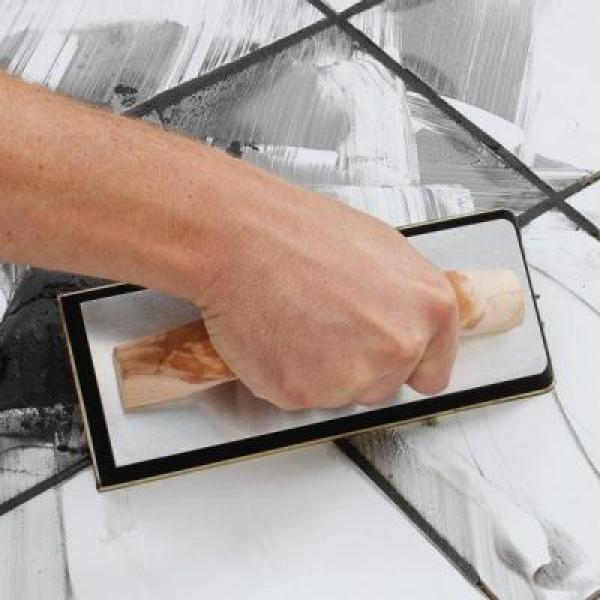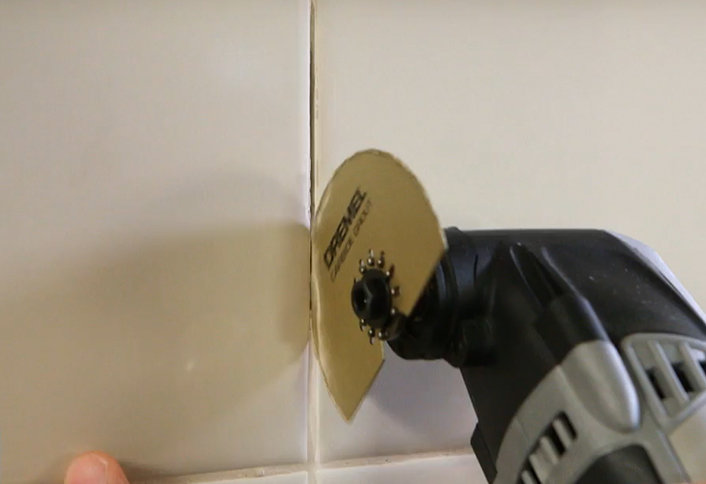How to Re-Grout Ceramic Tile

Ceramic tile is a wonderful product. It’s beautiful and durable—and often affordable, if you buy the less expensive varieties. Because it’s waterproof, ceramic tile is used mostly in bathrooms and kitchens. It’s hard to beat compressed, glazed and baked clay when it comes to repelling water. Unfortunately, the same can’t be said of tile grout. It performs adequately to keep out water, but when it’s usually only 1/16-inch thick on most walls, it doesn’t take very long for it to degrade. A couple of years of daily showers can start to loosen up a grout job.
This wearing away is different than the grout becoming stained with mildew, a common problem that is a nuisance, but not a serious concern. There are many products available at hardware stores, home centers, supermarkets, and even drugstores to defeat mildew, but repairing broken or worn-away grout requires more effort. A casual glance at grout joints often does not reveal its true state. Look closer with a magnifying glass. The top surface of each joint can be slightly concave. If you can see minor cracks and holes between the grout and the tile, the grout should be replaced.
How Much Grout to Replace
Keep in mind that if you have grout problems at the bottom on a tub or shower wall, you don’t have to replace all the grout on the wall. Just match the color of the replacement grout to what is already in place. The job will look the best if you establish the highest point where there’s bad grout and use it as a guide for the rest on the wall. This will probably mean that you’ll be replacing some grout that isn’t damaged, but the finished result will look better, even if there’s a slight color difference between the old and new grout.
Various hand tools and power tools are available for scraping grout away from tile joints. They can all do the job, and a sensible choice is usually based on how much you want to invest. The goal when removing grout is not to get all the way to the wall covering under the tiles. Removing slightly more than half the grout should create a deep enough crack to hold the new grout. After you’ve scraped away enough grout, vacuum the dust off the tile and the joints, and then get ready to apply the new grout.
Re-Grouting Wall Tiles

Powdered grout that must be mixed with water is the standard grout
because it’s inexpensive. But a few more dollars will buy you
premixed grout, which is properly mixed and saves time.
Grout is typically sold in powdered form that is mixed with water to create a paste with a slightly soupy consistency. Some grouts come in different colors so they can be matched better with existing joints. Color additives are also available that can be mixed with plain grout to get a suitable match. The grout will change color slightly as it dries, so if color match is very important to you, run a test on a couple of joints before re-grouting the entire surface. If the grout dries to an unacceptable color, scrape the test grout from the joints, adjust the color, and try again.

A rubber-faced grout float is the best tool for forcing grout into the cracks between tiles.
One of the best ways to achieve a high-quality job is to force the grout as deeply as possible into the joints using a rubber-faced trowel to apply the grout. Because the surface of the trowel is resilient, it does a better job of forcing the grout into the joints. The deeper the grout goes, the more of the tile edges it can grip, making it less prone wearing away.
Once all the joints are filled, wipe away the excess grout with a clean damp cloth, then allow the grout to cure according to the manufacturer’s directions. This usually takes a few days and requires keeping the surface moist by intermittently misting the joints with water from a spray bottle. When the tile is properly cured, it’s a good idea to protect it with clear silicone sealer. This is available in different applicators, but most come in pen form and dispense the silicone from the tip as the tool is pulled across the joint.
Re-Grouting Floor Tiles

This simple accessory mounts on a grinder
and makes grout removal easier on both walls and floors.
Re-grouting floor tiles is approached the same way as wall tiles. There are only two significant differences between these applications. First, the joints tend to be at least ¼-inch wide. Second, floors can have more cracked grout joints because they tend to move up and down more than walls due to the heavy loads crossing over them. The thicker joints will require more effort to clean out. Matching the existing grout color will also be more important because the goal is to remove the least amount of grout necessary. Many times, only part of a joint will be broken. If only some of the grout is removed, then a good color match will make the repair invisible.
Adding to the difficulty of floor tile re-grouting is the possibility that the existing grout is very hard, more so than typical wall tile grout. If this is the case on any floor job, investigate one of the oscillating tool accessories designed to make grout removal easier. You’ll be on your way to a solid tile floor in no time.